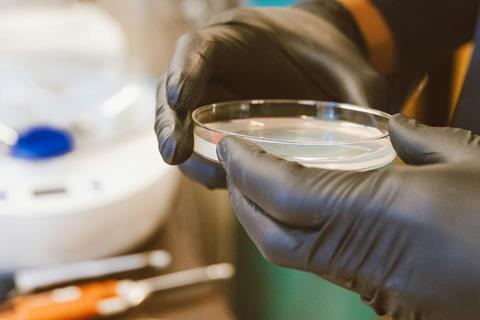Since cefixime and tellurite are known to inhibit most bacteria belonging to Enterobacterales, a team of scientists has found that addition of tellurite inhibited E. albertii growth in Luria Bertani broth but not in tryptic soy broth (TSB), and addition of phosphate and soy peptone enhanced E. albertii growth in TSB in presence of tellurite.

Subsequently, to find the positive factor present in TSB, the team at Osaka Metropolitian University examined E. albertii growth in tryptone, soy peptone, glucose, or phosphate deficient tryptic soy agar plates.
Phosphate, soy peptone, and/or glucose deficiency indeed decreased E. albertii growth. However, none of the substances are specifically present in xylose-rhamnose-melibiose (XRM)-MacConkey agar and thus, not affecting E. albertii growth.
READ MORE: Agar and the curse of purity
READ MORE: New method enables efficient isolation of raccoon-borne food poisoning pathogen
The team has now developed a novel E. albertii selective differential medium, XRM-MacConkey medium containing cefixime (C), tellurite (T), phosphate (P), and soy peptone (S) (named CT-PS-XR-MacConkey medium), which differentiates E. albertii (colorless) from E. coli (red) by colony color.
156 bacterial strains
The CT-PS-XR-MacConkey agar was evaluated with 156 bacterial strains including 65 E. albertii. While all E. albertii strains grew as colorless colonies, 54 strains of 9 different genera belonging to 19 different species were unable to grow on this medium. However, the rest of these bacterial strains grew either as colorless or as red colonies.
Furthermore, spiking experiments using chicken meat as food samples showed that the CT-PS-XR-MacConkey medium is highly selective for E. albertii than XRM-MacConkey agar.
Altogether, the results suggest that the CT-PS-XR-MacConkey agar is indeed a useful selective medium for isolation of E. albertii from food samples. The study appears in the International Journal of Food Microbiology.







No comments yet